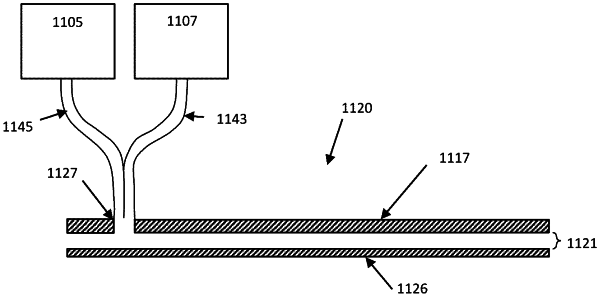| CPC B01L 3/502792 (2013.01) [B01L 3/50273 (2013.01); B01L 3/502715 (2013.01); B01L 3/502784 (2013.01); B01L 2200/027 (2013.01); B01L 2200/0673 (2013.01); B01L 2200/0689 (2013.01); B01L 2200/16 (2013.01); B01L 2300/0645 (2013.01); B01L 2300/0816 (2013.01); B01L 2300/0819 (2013.01); B01L 2300/0883 (2013.01); B01L 2300/123 (2013.01); B01L 2300/165 (2013.01); B01L 2400/0427 (2013.01); B01L 2400/0487 (2013.01)] | 19 Claims |

|
1. A digital microfluidics (DMF) apparatus, the apparatus comprising:
a removable cartridge comprising:
a dielectric layer having a first hydrophobic layer disposed thereon;
a top plate having a ground electrode and a second hydrophobic layer disposed over the ground electrode;
an air gap separating the first hydrophobic layer and the second hydrophobic layer;
a first sample compartment having a first opening configured to couple the first sample compartment to the air gap;
a second sample compartment having a second opening configured to couple the second sample compartment to the air gap, wherein the first and second sample compartments extend along a side of the top plate disposed away from the air gap;
a plurality of actuation electrodes arranged in a first plane adjacent to the dielectric layer; and
a fluid application and extraction interface device configured to apply and remove fluid into the air gap,
wherein at least one of the plurality of actuation electrodes between the first and second openings is configured to form a bridging region while passing fluid from the first opening to the second opening, thereby allowing a large volume of fluid to be exchanged between the first sample compartment and the second sample compartment.
|